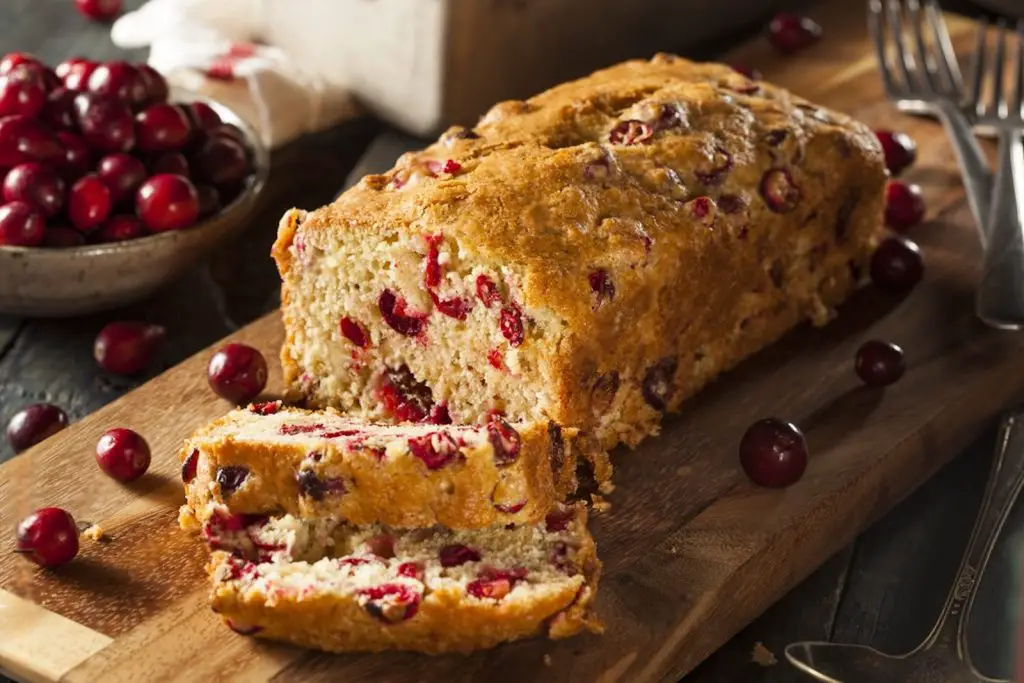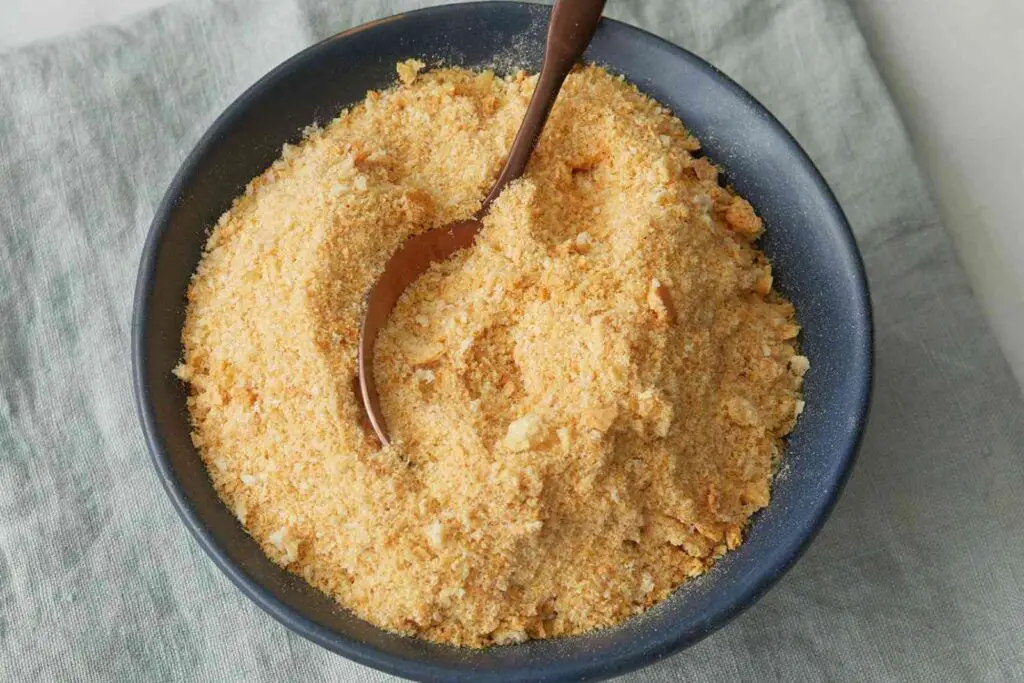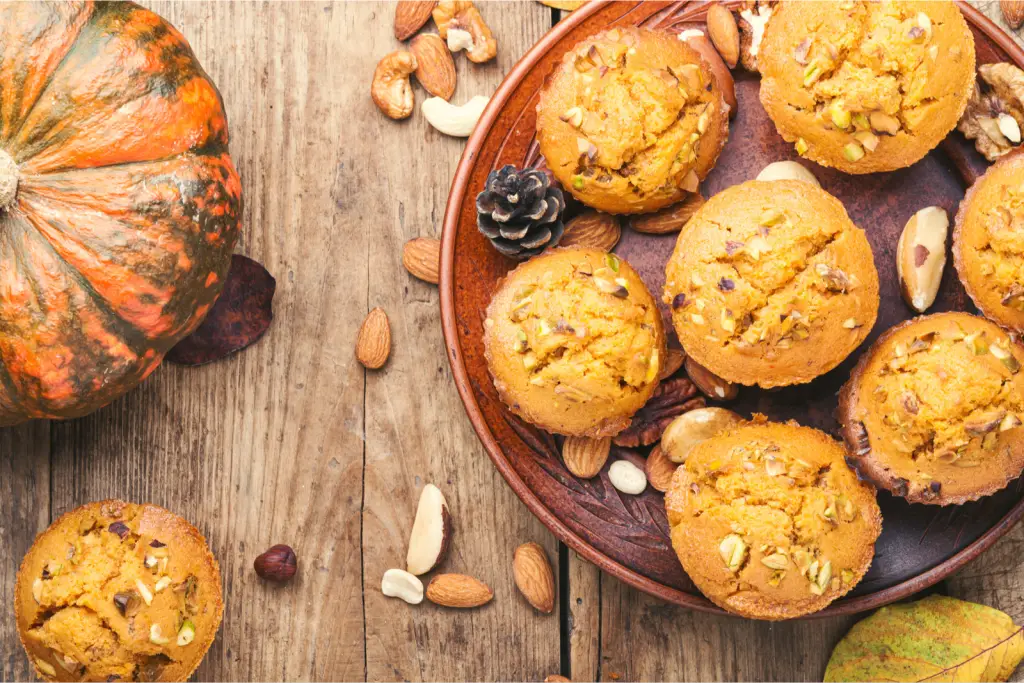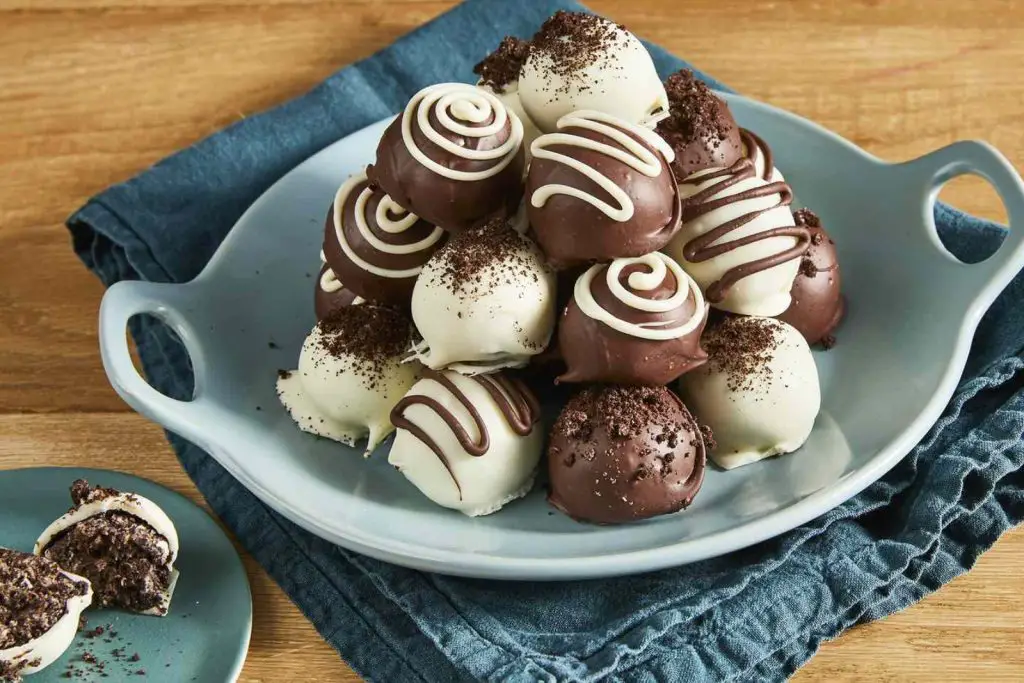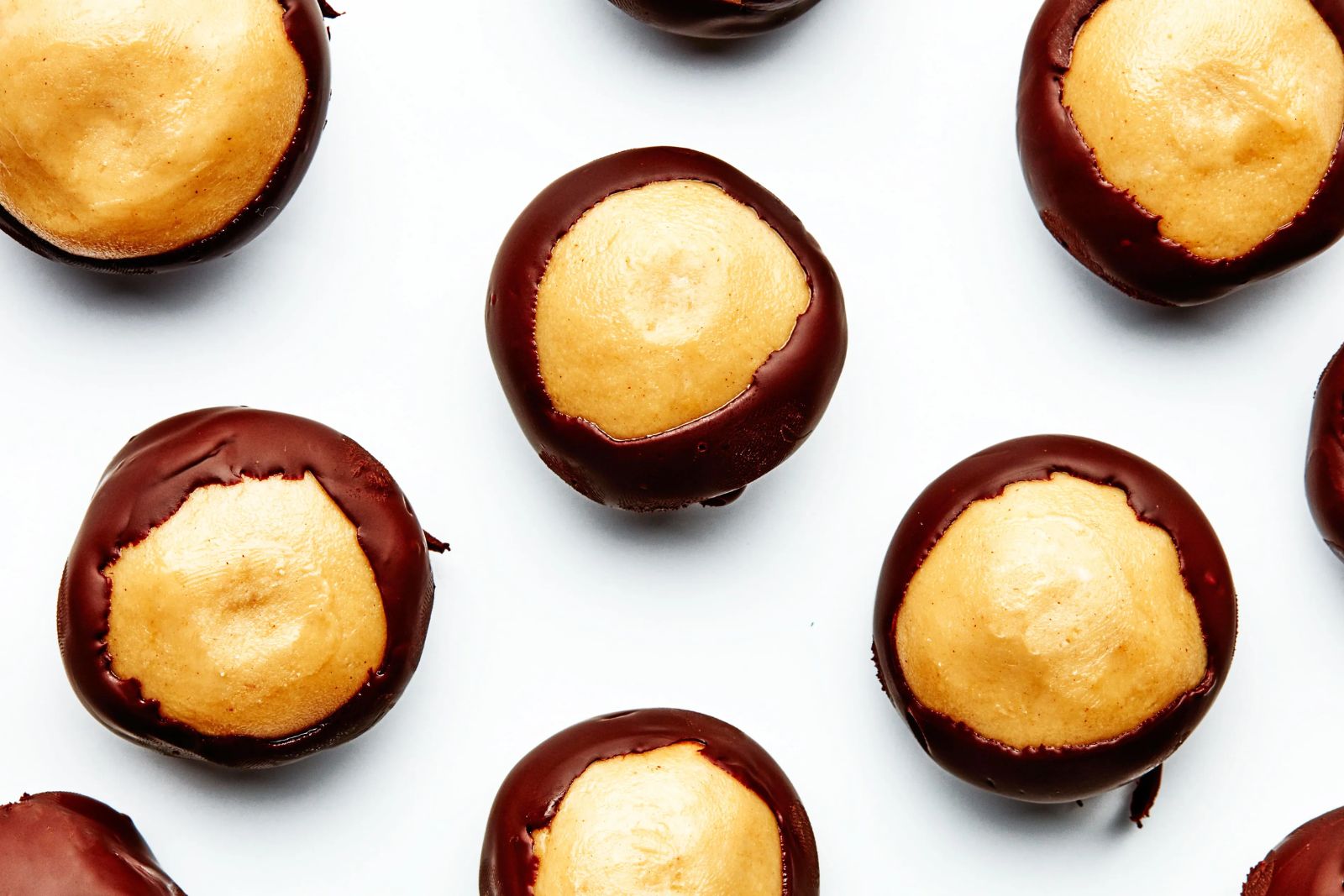
Buckeyes, sweet and indulgent treat that captures the essence of peanut butter and chocolate in a delectable bite-sized form. Buckeyes are a beloved confection originating from the Midwest, particularly associated with the state of Ohio. These irresistible treats consist of a creamy peanut butter filling coated in rich chocolate, resembling the nuts of the buckeye tree. While buckeyes are typically enjoyed fresh, freezing them can be a fantastic way to extend their shelf life and have a stash of these delectable treats on hand whenever cravings strike. Freezing buckeyes allows you to preserve their flavors, texture, and overall deliciousness. In this guide, we will explore the process of freezing buckeyes, providing you with helpful tips and techniques to ensure that your frozen buckeyes retain their irresistible taste. So whether you’re preparing a batch for a special occasion, gifting them to friends and family, or simply want to indulge in this delightful treat over time, freezing buckeyes is a wonderful way to enjoy their scrumptiousness at your own pace.
Here are the simple steps to freeze buckeyes:
Step 1: Prepare Fresh Buckeyes
Choosing freshly made buckeyes for freezing is essential to ensure that they retain their best quality throughout the freezing process. Here’s why it’s important to use fresh buckeyes:
- Optimal taste and texture: Freshly made buckeyes have a rich and creamy peanut butter center that is perfectly balanced with the chocolate coating. Their texture is smooth and indulgent. By starting with fresh buckeyes, you can preserve these delicious qualities even after freezing.
- Quality preservation: Buckeyes are best enjoyed when they are at their freshest. The flavors are more vibrant, and the ingredients are at their peak quality. Freezing them immediately after preparation helps to lock in these desirable attributes and prevent any deterioration that may occur over time.
- Minimizing moisture content: Buckeyes that have been freshly made have a lower moisture content, which is important for freezing. Moisture can lead to freezer burn and adversely affect the taste and texture of the candies. Using fresh buckeyes reduces the risk of excessive moisture and maintains their overall quality.
- Enhanced shelf life: Freezing buckeyes allows you to extend their shelf life significantly. By starting with fresh buckeyes, you ensure that you have a longer window of time to enjoy them without compromising their taste or texture.
Remember, the quality of the buckeyes before freezing will directly impact the quality of the thawed buckeyes. So, take the time to ensure that you have freshly made buckeyes to freeze, and you’ll be rewarded with a delightful treat whenever you decide to enjoy them.
Step 2: Place on a Baking Sheet
Once you have your freshly made buckeyes ready for freezing, the next step is to arrange them on a baking sheet. This step is crucial to ensure that the buckeyes maintain their shape and don’t stick together during the freezing process. Here’s why it’s important and how to do it:
- Prevent sticking: Buckeyes can have a sticky texture, especially when they start to soften slightly at room temperature. Placing them in a single layer on a baking sheet ensures that they won’t stick to each other as they freeze. This way, you’ll be able to easily separate individual buckeyes when it’s time to thaw and enjoy them.
- Maintain shape: Buckeyes are typically round or oval-shaped candies. By arranging them on a baking sheet with space between each piece, you help them retain their distinct shape. If the buckeyes were piled on top of each other, they could lose their individual form and fuse together, resulting in an unappealing appearance.
To place buckeyes on a baking sheet:
- Line the baking sheet: Start by lining a baking sheet with parchment paper or wax paper. This prevents the buckeyes from sticking to the surface and makes it easier to remove them once frozen.
- Single-layer arrangement: Carefully place the buckeyes on the lined baking sheet, ensuring they are not touching each other. Leave some space between each buckeye to allow air to circulate around them during the freezing process.
- Repeat if necessary: If you have more buckeyes than can fit on a single baking sheet without touching, you can use additional lined baking sheets. It’s crucial to maintain a single layer for each batch to prevent them from sticking together.
Once you have arranged the buckeyes on the baking sheet, you can proceed to the next step of pre-freezing them before transferring them to a freezer-safe container. Taking the time to properly arrange the buckeyes on the baking sheet ensures that they freeze individually and maintain their shape and texture for the best possible results when you’re ready to enjoy them.
Step 3: Pre-Freeze the Buckeyes
After arranging the buckeyes in a single layer on the baking sheet, the next step is to pre-freeze them. This step is essential to prevent the buckeyes from sticking together during the final freezing process. Here’s why pre-freezing is important and how to do it:
- Prevent sticking: Buckeyes can have a tendency to stick to each other when they come into contact, especially when they start to soften slightly at room temperature. Pre-freezing the buckeyes on the baking sheet helps firm them up and create a protective layer that reduces the chances of sticking.
- Individual freezing: During the pre-freezing step, each buckeye freezes individually before they are transferred to a freezer-safe container. This ensures that they maintain their individual shape and texture, making it easier to separate and enjoy them later without any clumping or fusion.
To pre-freeze the buckeyes:
- Place the baking sheet in the freezer: Carefully transfer the baking sheet with the arranged buckeyes into the freezer. Make sure the sheet lies flat and is not tilted to avoid any buckeyes rolling and sticking to each other.
- Pre-freeze for 1 to 2 hours: Allow the buckeyes to pre-freeze in the freezer for about 1 to 2 hours. The exact time may vary depending on the size and composition of the buckeyes, as well as the temperature of your freezer. The aim is to have the buckeyes firm to the touch but not completely frozen.
- Check for readiness: After the pre-freezing time, check the buckeyes to ensure they are firm and no longer soft. This indicates that they are ready for the next step of transferring them to a freezer-safe container.
Pre-freezing the buckeyes on the baking sheet is a crucial step in the freezing process. It helps set them individually and prevents them from sticking together. Once the buckeyes are pre-frozen, you can proceed to transfer them to a freezer-safe container, ensuring their long-term freshness and easy storage.
Step 4: Transfer to a Freezer-Safe Container
After pre-freezing the buckeyes on the baking sheet, the next step is to transfer them to a suitable freezer-safe container. This ensures proper storage and maintains the quality of the buckeyes during their time in the freezer. Here’s why transferring to a freezer-safe container is important and how to do it:
- Protection from freezer burn: A freezer-safe container provides a barrier against air and moisture, reducing the risk of freezer burn. Freezer burn can affect the taste and texture of the buckeyes, resulting in a less enjoyable eating experience. By using a suitable container, you can help preserve the quality of the buckeyes for an extended period.
- Organization and space-saving: Transferring the buckeyes to a container allows for better organization in the freezer. It prevents the buckeyes from getting scattered or lost and makes it easier to locate and access them when needed. Additionally, using a container helps save space in the freezer by allowing for efficient stacking and utilizing vertical storage.
To transfer the pre-frozen buckeyes to a freezer-safe container:
- Carefully remove from the baking sheet: Take the pre-frozen buckeyes off the baking sheet, ensuring that they are no longer sticking to the parchment paper or wax paper.
- Choose a suitable container: Select a freezer-safe container, such as an airtight plastic container or freezer bag. Make sure it is clean and free from any odors that might transfer to the buckeyes.
- Place the buckeyes in the container: Gently place the pre-frozen buckeyes into the container, arranging them in a single layer if possible. If you have multiple layers, separate them with a sheet of parchment paper or wax paper to prevent any sticking.
- Leave space for expansion: Allow some space at the top of the container to accommodate any expansion that may occur as the buckeyes freeze further. This prevents the container from becoming too tightly sealed, which could affect the buckeyes’ texture.
- Seal the container: Ensure the container is tightly sealed to maintain a proper barrier against air and moisture.
By transferring the pre-frozen buckeyes to a freezer-safe container, you create a suitable environment for long-term storage. This step protects the buckeyes from freezer burn and helps keep them organized and easily accessible. When properly sealed, the container will safeguard the buckeyes’ quality until you’re ready to enjoy them.
Step 5: Seal and Label the Container
Once you have transferred the pre-frozen buckeyes to a freezer-safe container, it’s important to seal it tightly and label it for proper identification and freshness tracking. Here’s why sealing and labeling the container is important and how to do it:
- Protection from air and moisture: Sealing the container tightly is crucial to prevent air and moisture from entering. Exposure to air can lead to freezer burn and affect the texture and taste of the buckeyes. By creating a secure seal, you maintain the quality and freshness of the candies throughout their time in the freezer.
- Identification and organization: Labeling the container allows you to easily identify the contents without having to open it. This is particularly useful when you have multiple items in the freezer. Additionally, labeling helps you keep track of the freezing date, ensuring you consume the buckeyes within a reasonable timeframe for the best taste and quality.
To seal and label the container:
- Ensure a tight seal: Check that the container is properly sealed. This may involve using airtight lids, securing zippers on freezer bags, or using sealing mechanisms specific to the container you’re using. A secure seal prevents the entry of air or moisture.
- Label the container: Use a permanent marker or adhesive label to clearly mark the container with the current date. Write the date of freezing so you can monitor the storage time and prioritize the consumption of older batches.
- Additional labeling: If desired, you can add any additional information to the label, such as the contents (“Buckeyes”) or any special notes (e.g., “Homemade” or “Gifted”).
By sealing the container tightly and labeling it, you ensure the best preservation of the buckeyes in the freezer. The seal protects against air and moisture, while the label helps with identification and monitoring of freshness. These steps contribute to maintaining the quality of the buckeyes until you’re ready to enjoy them.
Step 6: Store in the Freezer
After sealing and labeling the container of buckeyes, the next step is to properly store it in the freezer. This ensures that the buckeyes remain frozen and maintain their quality over an extended period. Here’s why storing the container in the freezer is important and how to do it:
- Temperature consistency: The freezer provides a controlled environment with consistently low temperatures, which is essential for preserving the quality of frozen foods. Storing the buckeyes in the freezer ensures that they remain solidly frozen and prevents any spoilage or degradation.
- Protecting against crushing: Placing the container in the back of the freezer helps protect the buckeyes from being crushed. The back of the freezer tends to have a more stable temperature and is less prone to temperature fluctuations caused by frequent door openings. Avoid stacking heavy items on top of the container to prevent any pressure that could deform or crush the buckeyes.
To store the sealed container of buckeyes in the freezer:
- Choose an appropriate spot: Select a spot in the freezer where the temperature remains constant, typically towards the back or in a designated freezer compartment.
- Avoid temperature fluctuations: Keep the container away from the freezer door or areas where it may be exposed to warmer temperatures due to frequent door openings. This helps maintain a consistently cold environment for the buckeyes.
- Prevent crushing: Place the container in a location where it won’t be subjected to excessive pressure or weight from other items in the freezer. Avoid stacking heavy objects on top of the container to prevent any damage to the buckeyes.
By storing the sealed container of buckeyes in the freezer in an appropriate location, you ensure that they remain properly frozen and well-preserved. This step protects the buckeyes from temperature fluctuations and potential crushing, allowing them to maintain their taste, texture, and quality until you’re ready to enjoy them.
How long buckeyes can last in the freezer?
Buckeyes can last in the freezer for up to 2 to 3 months without significant loss in quality. Properly sealed and stored buckeyes can maintain their taste, texture, and freshness during this period. However, for the best eating experience, it is recommended to consume them within the first month of freezing.
Step 7: Thaw the Frozen Buckeyes
When the time comes to enjoy the frozen buckeyes, it’s important to follow the proper thawing process to ensure they retain their texture and flavor. Here’s why thawing is important and how to do it:
- Texture preservation: Thawing the buckeyes gradually helps preserve their texture. Rapid thawing, such as using a microwave or placing them at room temperature, can lead to undesirable changes in texture, such as a soggy or mushy consistency. By thawing them slowly, you maintain the desired firmness and creaminess of the buckeyes.
- Flavor enhancement: Thawing in the refrigerator allows the buckeyes to slowly come to their optimal eating temperature. This gradual thawing process enhances the flavors and ensures that the peanut butter center and chocolate coating are at their best when consumed.
To thaw and enjoy the buckeyes:
- Retrieve the container from the freezer: Remove the sealed container of buckeyes from the freezer and place it in the refrigerator.
- Thaw in the refrigerator: Allow the buckeyes to thaw in the refrigerator for a few hours or until they reach the desired eating consistency. The exact time may vary depending on the size and thickness of the buckeyes.
- Enjoy when thawed: Once the buckeyes have thawed, they are ready to be savored. Take them out of the container and enjoy at room temperature.
By thawing the frozen buckeyes in the refrigerator, you preserve their texture and enhance their flavors. This gradual thawing process ensures that you can enjoy the buckeyes at their best when they reach the desired eating consistency.
Other related questions
Can you refreeze buckeyes?
Yes, buckeyes can be refrozen, but it may affect their texture slightly. When refreezing, there may be a slight compromise in the creamy consistency of the peanut butter center and the overall texture of the buckeyes. It’s best to consume thawed buckeyes within a few days, but if you have leftover thawed buckeyes, you can refreeze them following proper storage and freezing procedures to maintain their quality as much as possible.
How do I know if the buckeyes have gone bad after being frozen?
After being frozen, buckeyes may show signs of deterioration if they have gone bad. Look for indicators such as changes in color, texture, or taste. If the buckeyes appear discolored, develop an off smell, or have a rancid taste, it is recommended to discard them to avoid any potential foodborne illness.
Can I freeze buckeyes with alternative ingredients, such as using almond butter instead of peanut butter?
Yes, you can freeze buckeyes made with alternative ingredients, such as almond butter instead of peanut butter. However, it’s important to consider that the texture and flavor may differ slightly compared to traditional buckeyes. Ensure that the alternative ingredient is suitable for freezing, follow the same freezing process, and be aware that the taste and consistency may vary when frozen and thawed.
Can I freeze buckeyes with different fillings or coatings?
Yes, you can freeze buckeyes with different fillings or coatings. Whether it’s variations in the filling like using different nut butters or adding additional ingredients, or experimenting with different coatings such as white chocolate or colored sprinkles, you can freeze them successfully. Just ensure that the fillings and coatings are freezer-friendly, properly seal the buckeyes before freezing, and be aware that the taste and texture may vary slightly compared to traditional buckeyes.

